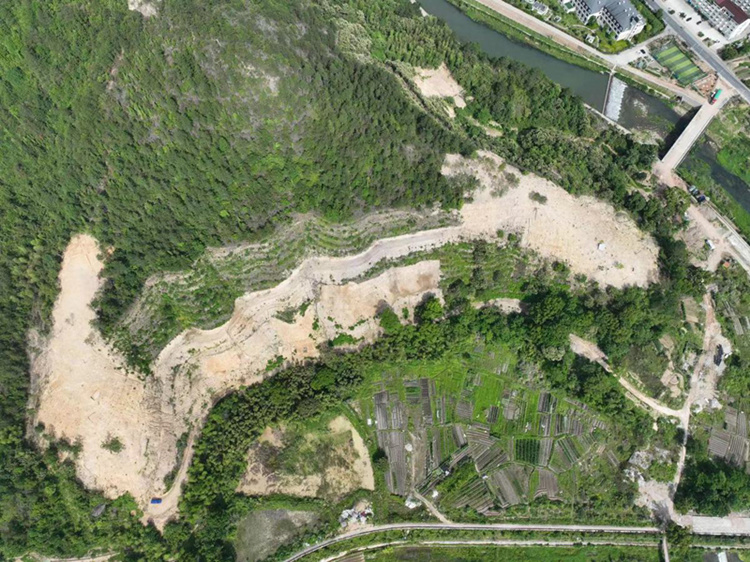Unearthed ancient bronze weapons offer insight into social hierarchy in Western Zhou Dynasty

An aerial view of the ruins of Dushan in Lishui's Yunhe county, East China's Zhejiang province. [Photo by Lei Qian/for chinadaily.com.cn]
Featuring 38 tombs which are believed to belong to nobles from the Western Zhou Dynasty (1,046BC-771BC) and the discovery of 25 precious bronze weapons, the Dushan site in East China's Zhejiang province has unveiled a treasure trove of ancient artifacts, which experts say provide valuable insights into the technological advancements and social hierarchy in the Western Zhou period.
More than 100 artifacts of various types were unearthed from the 37 pits in the site, which is in Yunhe county, Lishui, following eight months of archaeological excavation. Among them, there were 25 bronze items, such as swords and knives. Additionally, nine pieces of celadon porcelain, including vessels and basins, as well as nine stone tools, primarily grinding stones, have been found. This discovery marks the first time that numerous bronze items were unearthed in Lishui.
A particularly important find is an exquisitely decorated bronze spearhead in the shape of a swallow's tail.
"Similar types of bronze spearheads were previously discovered in the Zhangjiapo Cemetery in Xi'an, Northwest China's Shaanxi province, as well as in the middle and lower reaches of the Yangtze River. The discovery in Yunhe greatly expands the distribution range of these copper spears, providing new materials for the research of the origins of their production," Chen Minghui, deputy director of the prehistoric archaeology department of the Zhejiang Cultural Relic Archaeology Institute, told the Global Times.
According to Chen, the dominance of bronze items among the burial goods suggested that the excavated tombs belong to a relatively high-ranking aristocratic family, indicating the presence of social class distinctions during the Western Zhou period in the Yunhe region.
"This significant discovery at the Dushan site provides important materials for the study of the cultural landscape, bronze smelting technology, bronze manufacturing techniques, and even social and regional exchanges during the Western Zhou period in Zhejiang province," Chen stated.
Further technological and archaeological research into the bronze artifacts unearthed at the Dushan site will be carried out.
From 2021 to 2022, there were excavations at the Menqianshan site in the Yunhe region, which yielded 15 early Western Zhou tombs containing items such as porcelain jars and bowls. Chen believed that the absence of bronze artifacts at the Menqianshan site suggested that the burial grade at the site was relatively low, indicating that it was a cemetery for common families.





 play
play